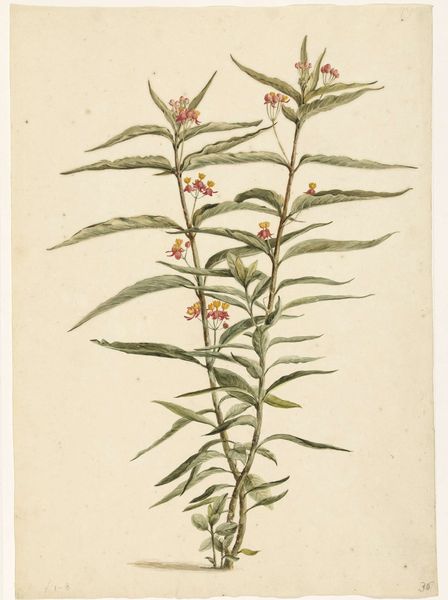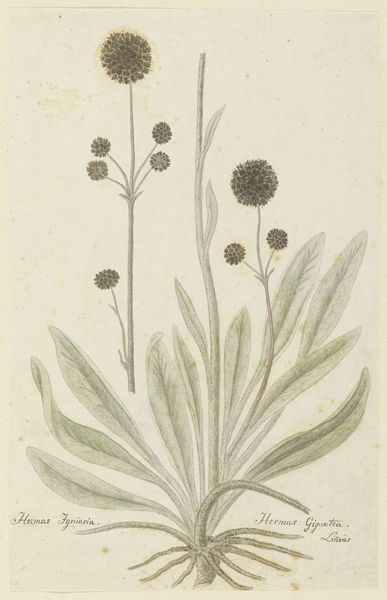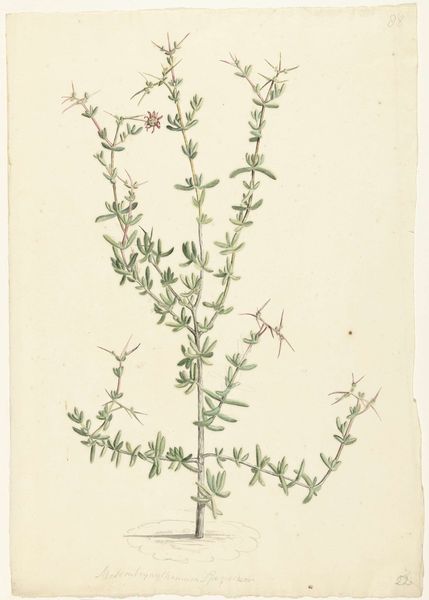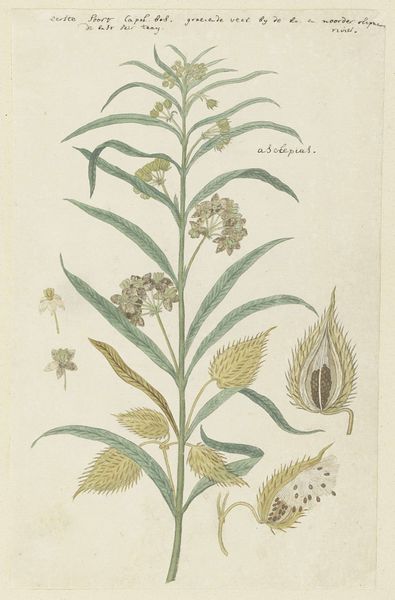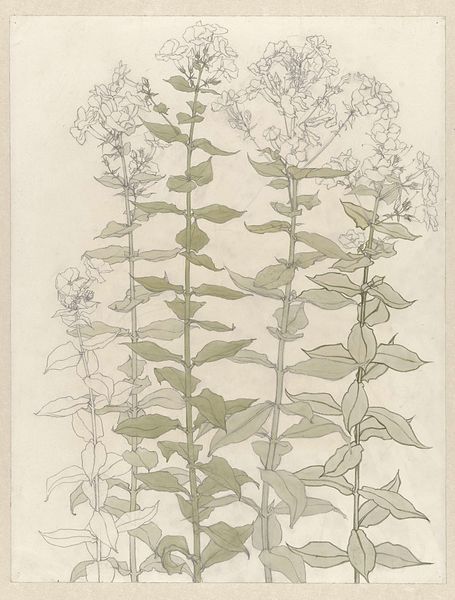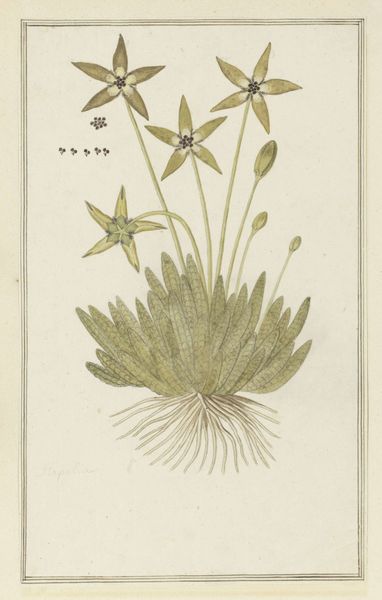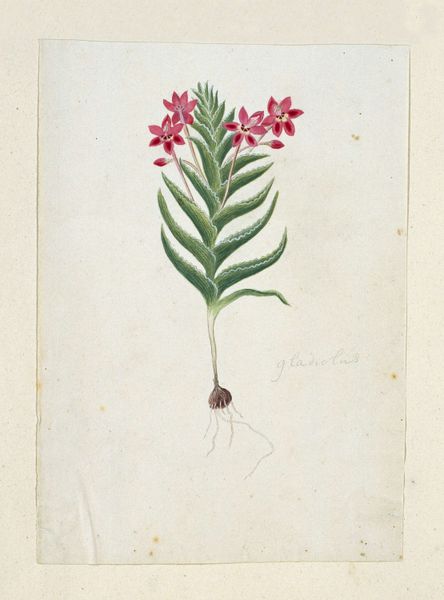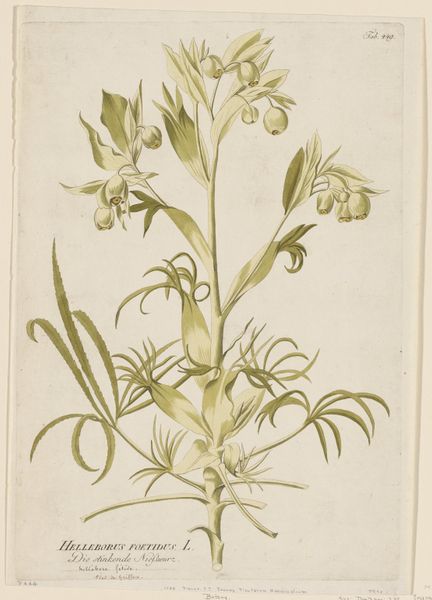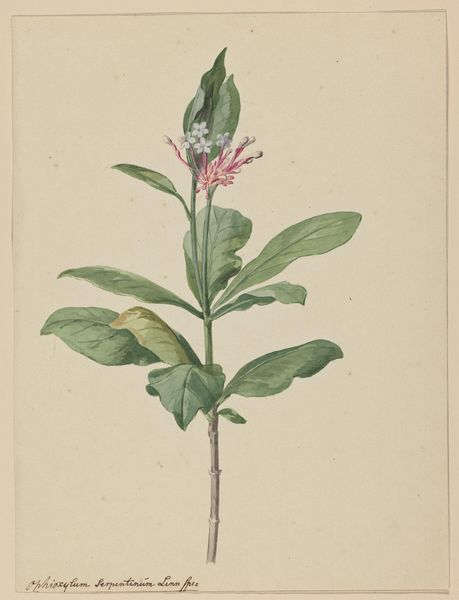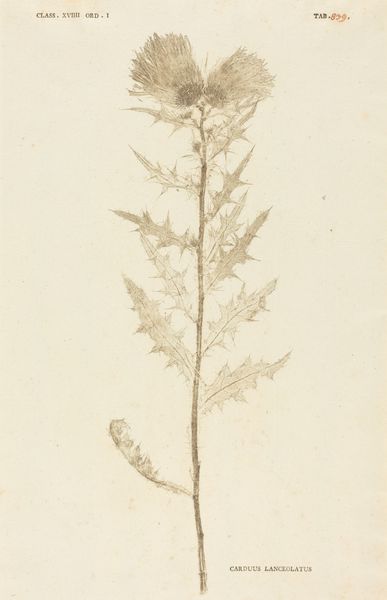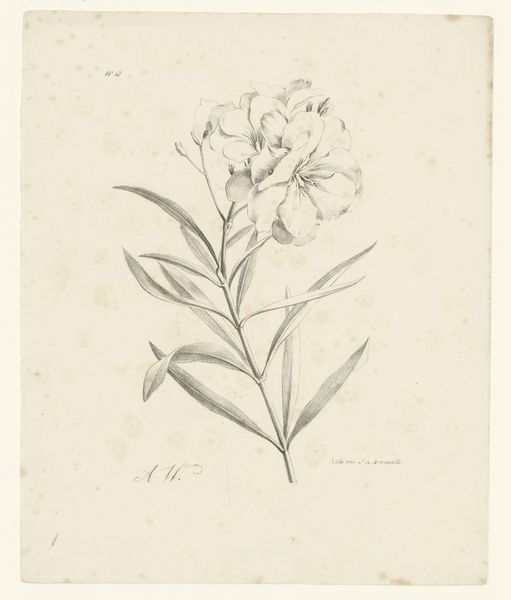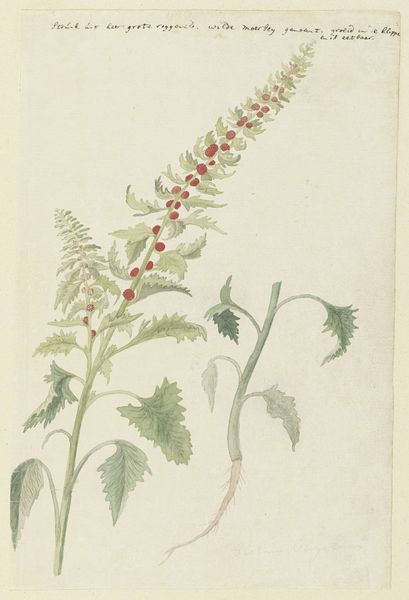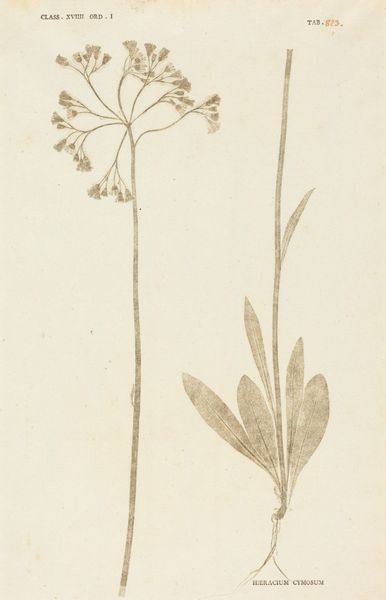
drawing, painting, paper, watercolor
#
drawing
#
painting
#
landscape
#
paper
#
form
#
watercolor
#
botanical drawing
#
ceramic
#
line
#
watercolour illustration
#
botanical art
#
watercolor
#
realism
Dimensions: height 660 mm, width 480 mm, height 429 mm, width 270 mm, height mm, width mm
Copyright: Rijks Museum: Open Domain
Curator: Here we have Robert Jacob Gordon’s watercolor and ink drawing on paper titled, "Crassula perfoliata L. (Sekelblaarplakkie)", thought to have been made sometime between 1777 and 1786. Editor: It's delicate, almost fragile in its rendering. The pale green leaves offer a subtle contrast to the vibrant, clustered red blossoms. Curator: Indeed. Gordon, a military officer in the Dutch East India Company, used his travels in South Africa to document its flora, fauna, and indigenous populations. His work reflects both scientific observation and the colonial gaze. Editor: The focus on minute detail speaks to a scientific purpose, a desire for accurate representation. Note how the artist captures the texture and form through fine linework. Curator: Absolutely. Consider the conventions of botanical illustration at the time; there was significant value placed on depicting exotic species for European audiences. It fulfilled an emerging desire for scientific understanding, and perhaps, even conquest through knowledge. Editor: The composition creates an interesting tension, too. The plant is meticulously rendered, while the background is left blank, forcing the viewer's attention solely on the specimen's form. The asymmetrical balance in how the roots appear creates dynamic interest in the overall visual construction of this image. Curator: The seemingly sparse background is itself an ideological choice. This isolation reinforces a narrative of European discovery and control, separating the plant from its native context, recasting it as an object of study and commodity. Editor: Yet, I can also appreciate the artistic restraint. It prevents visual clutter, highlighting the subtle tonal gradations in the leaves. See how the watercolor is layered to give dimension to otherwise flat, elliptical leaf shapes? It demonstrates the power of minimalist aesthetics. Curator: That restraint may well reflect a desire for scientific accuracy, to objectively document nature. Yet, within the framework of colonialism, even the most objective depiction carries social implications. Editor: A fruitful discussion. I've been freshly reminded that visual clarity, like truth itself, has nuanced layers. Curator: A plant, it seems, cannot be divorced from its soil – even in art.
Comments
No comments
Be the first to comment and join the conversation on the ultimate creative platform.
